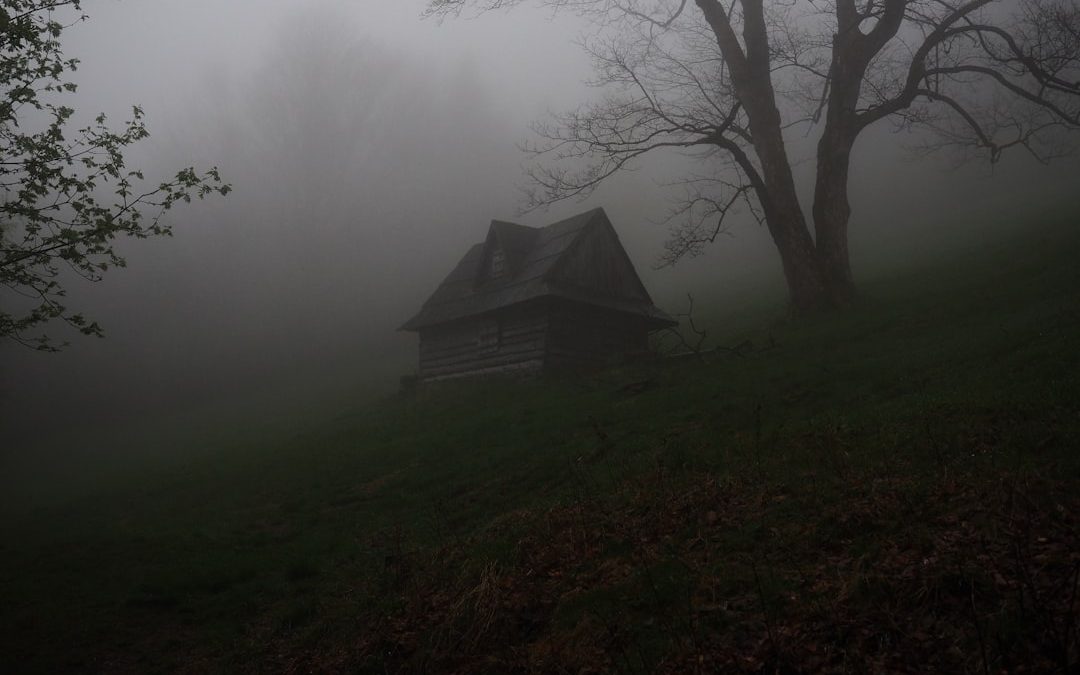The notion that a single insurance policy can adequately cover the diverse needs of every homeowner is a pervasive myth in the realm of property insurance. Many individuals assume that a standard home insurance policy will suffice, failing to recognize the unique circumstances that can affect coverage requirements. For instance, a homeowner living in a coastal area may face different risks compared to someone residing in a mountainous region.
Factors such as local climate, crime rates, and even the age of the home can significantly influence the type and amount of coverage needed. A one-size-fits-all approach can leave homeowners vulnerable to gaps in their insurance, exposing them to financial risks that could have been mitigated with tailored coverage. Moreover, the misconception extends beyond geographical considerations.
Homeowners often overlook personal factors such as their lifestyle, possessions, and financial situation when selecting insurance. For example, a family with valuable collectibles or high-end electronics may require additional coverage beyond what a standard policy offers. Similarly, those who frequently host guests or run home-based businesses may need specific endorsements to protect against liability claims.
The reality is that insurance needs are as varied as the individuals themselves, and understanding this complexity is crucial for ensuring adequate protection.
Key Takeaways
- One-size-fits-all coverage is a myth; individuals should tailor their insurance policies to their specific needs and circumstances.
- Renters should consider getting insurance to protect their personal belongings and liability, as the landlord’s insurance does not cover the tenant’s possessions.
- Flood insurance is typically not included in standard home insurance policies and should be purchased separately, especially for those living in flood-prone areas.
- Home insurance may not fully cover high-value items such as jewelry, art, and collectibles, and additional coverage may be necessary.
- Home-based businesses may not be covered by standard home insurance policies, and entrepreneurs should consider getting separate business insurance to protect their assets.
- Home insurance may not cover natural disasters such as earthquakes and hurricanes, and additional coverage may be needed depending on the location.
- Wear and tear on the home is generally not covered by home insurance, and homeowners should be prepared for maintenance and repairs out of pocket.
- Even new homes can benefit from home insurance to protect against unforeseen events and liabilities, making it a necessary investment for homeowners.
The Myth of Renters Not Needing Insurance
Another common misconception is that renters do not require insurance because they do not own the property they inhabit. This belief is fundamentally flawed, as renters face numerous risks that can lead to significant financial loss. While it is true that landlords typically carry insurance for the building itself, this coverage does not extend to tenants’ personal belongings or liability for accidents that occur within the rented space.
Without renters insurance, individuals may find themselves unprotected in the event of theft, fire, or water damage, leaving them to bear the full brunt of replacement costs. Additionally, renters insurance provides liability coverage that can be crucial in protecting tenants from lawsuits. For instance, if a guest were to slip and fall in a rented apartment, the tenant could be held liable for medical expenses and damages.
The relatively low cost of renters insurance compared to the potential financial fallout makes it an essential consideration for anyone living in a rental property.
The Myth of Flood Insurance Being Included in Home Insurance

Many homeowners mistakenly believe that their standard home insurance policy includes coverage for flood damage. This misconception can lead to devastating consequences, especially for those living in flood-prone areas. In reality, most home insurance policies explicitly exclude flood damage, requiring homeowners to purchase separate flood insurance through the National Flood Insurance Program (NFIP) or private insurers.
The need for flood insurance is underscored by statistics indicating that floods are among the most common and destructive natural disasters in the United States. According to FEMA, just one inch of water can cause up to $25,000 in damage to a home.
Homeowners who fail to secure flood insurance may find themselves facing overwhelming repair costs after a flood event, with little recourse for recovery. Understanding the limitations of standard home insurance policies is vital for homeowners to ensure they are adequately protected against this significant risk.
The Myth of Home Insurance Covering All Valuables
A prevalent myth surrounding home insurance is the belief that all personal belongings are automatically covered under a standard policy. While home insurance does provide coverage for personal property, it often comes with limitations and exclusions that can catch homeowners off guard. For instance, high-value items such as jewelry, art, and collectibles may have sub-limits within a standard policy, meaning that if these items are lost or damaged, the payout may not cover their full value.
Homeowners must be proactive in assessing their possessions and determining whether additional coverage or endorsements are necessary. Furthermore, certain types of property may not be covered at all under standard home insurance policies. For example, business equipment used for home-based businesses or specialized sports equipment may require separate policies or riders for adequate protection.
Homeowners should conduct a thorough inventory of their belongings and consult with their insurance agent to ensure they have appropriate coverage for all valuable items. Failing to do so could result in significant financial loss in the event of theft or damage.
The Myth of Home Insurance Covering Home-Based Businesses
As more individuals turn to entrepreneurship and remote work, the myth that home insurance covers home-based businesses has become increasingly problematic. Many entrepreneurs assume that their home insurance policy will extend to their business activities; however, this is often not the case. Standard home insurance policies typically exclude coverage for business-related liabilities and property damage incurred during business operations.
This oversight can leave business owners vulnerable to significant financial risks. For instance, if a client were to visit a home-based business and sustain an injury on the premises, the homeowner could be held liable for medical expenses and damages without adequate business liability coverage. Additionally, equipment used for business purposes may not be covered under a standard policy, leaving entrepreneurs at risk of losing essential tools and resources without compensation.
To protect their interests, home-based business owners should consider obtaining specialized business insurance or endorsements that specifically address their unique risks.
The Myth of Home Insurance Covering Natural Disasters

Homeowners often operate under the assumption that their home insurance will cover all types of natural disasters, including earthquakes and hurricanes. This belief is misleading and can lead to severe financial repercussions in the event of such disasters. Most standard home insurance policies exclude coverage for specific natural disasters, necessitating separate policies or endorsements for adequate protection against these risks.
For example, earthquake insurance is typically not included in standard home insurance policies and must be purchased separately. Similarly, while some hurricane-related damages may be covered under certain policies, others may require additional windstorm coverage or specific endorsements. Homeowners must be diligent in understanding their policy’s limitations and proactively seek out additional coverage options tailored to their geographic location and potential natural disaster risks.
The Myth of Home Insurance Covering Wear and Tear
A common misconception among homeowners is that their home insurance will cover damages resulting from normal wear and tear. This belief is fundamentally flawed; home insurance is designed to protect against sudden and accidental damages rather than gradual deterioration due to age or lack of maintenance. Issues such as roof leaks from aging shingles or plumbing problems due to corroded pipes typically fall under the category of wear and tear and are not covered by standard policies.
This misunderstanding can lead homeowners to believe they are protected against all forms of damage when, in reality, they are responsible for maintaining their property and addressing issues before they escalate into larger problems. Regular maintenance and timely repairs are essential for preserving a home’s value and preventing costly damages that would not be covered by insurance. Homeowners should familiarize themselves with their policy’s exclusions regarding wear and tear to avoid unpleasant surprises when filing claims.
The Myth of Home Insurance Being Unnecessary for New Homes
Some individuals mistakenly believe that new homes do not require insurance due to their modern construction and perceived lower risk of damage. This myth overlooks several critical factors that make home insurance essential regardless of a property’s age. New homes can still be susceptible to various risks such as fire, theft, vandalism, and natural disasters—risks that are not mitigated by the home’s newness.
Additionally, many new homeowners may underestimate the value of their possessions or fail to account for potential liabilities associated with owning a home. For instance, if a visitor were injured on their property or if personal belongings were stolen shortly after moving in, homeowners without adequate insurance could face significant financial burdens. New homes often come with substantial investments in furnishings and upgrades; thus, securing appropriate coverage is vital for protecting these assets from unforeseen events.
FAQs
What are some common myths about home insurance?
Some common myths about home insurance include the belief that flood damage is covered, that home insurance covers all personal belongings, and that home insurance premiums are fixed.
Is flood damage covered by home insurance?
No, standard home insurance policies typically do not cover flood damage. Homeowners would need to purchase a separate flood insurance policy to protect their home and belongings from flood damage.
Does home insurance cover all personal belongings?
While home insurance does provide coverage for personal belongings, there are often limits and exclusions for certain high-value items such as jewelry, art, and collectibles. Homeowners may need to purchase additional coverage for these items.
Are home insurance premiums fixed?
Home insurance premiums are not fixed and can be affected by various factors such as the location of the home, the age and condition of the home, the homeowner’s claims history, and the coverage options selected. It’s important for homeowners to review and update their policy regularly to ensure they have adequate coverage at a competitive price.


